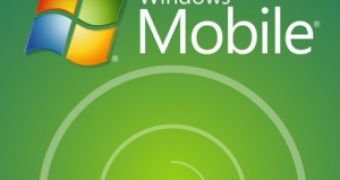Redmond-based software company Microsoft has just published this week new documentation for touch gestures that will be supported on the future flavor of its mobile operating system, Windows Mobile 6.5. It is already known that the platform is expected to come to the market on handsets sometime during this year's fall, and the company has heralded it as including a wide range of new features when compared to previous iterations of the OS, including the touch gestures that were previously unavailable.
It seems that the upcoming operating system will deliver support for a number of five classes of gestures, at least this is what Microsoft Evangelist Marcus Perryman says on his blog. These classes include Tap, Double-Tap, Hold, Pan and Flick. Although he talks about these gestures in regard to the 6.5 iteration of the platform, and the details he delivers are at the programming-interface level, the next-generation Windows Mobile 7 is the operating system that is expected to come to the market with real multi-touch support, yet he mentions nothing about it in the post.
“Windows Mobile (and CE) has supported touch screen interfaces since the beginning but the release of Windows Mobile 6.5 brings something new to the platform: gesture support. Gestures are intended to be a more natural way of interacting with the device through the touch screen, making more of an emotional connection between the user and the applications under the finger or stylus. [...] The touch solution is much more than just the gestures, it’s also about the animation and interaction that take place as a result of the gesture input, for example smoothly scrolling a list of items or ensuring a UI item remains fixed to the ‘finger’ to give the illusion that the user is directly manipulating the screen content as if it were tangible,” Perryman notes.
There are a series of details that seem to be of great importance in Perryman's post, such as the fact that Windows Mobile 6.5 and its support for touch gestures have been developed mainly for inclusion within mobile phones that sport resistive touch screens. According to him, there are some mobile phone makers that think about taking a step forward to capacitive screens, and the WM team is considering the development of support for other types of screens too. This means that capacitive screens might soon see support in Windows Mobile 6.5, but also that the future WM 7 will certainly come with this feature included.
The main difference between resistive and capacitive touch screens resides in the fact that the former need an amount of force to make contact between the conducting layers, while the latter require zero pressure to make an input. At the same time, Perryman also notes that resistive touch screens are cheaper and that they need a stylus to operate, while capacitive screens are a bit pricier. The latter, however, can be spotted in handsets like the Apple iPhone or the T-Mobile G1. Perryman's blog offers a variety of other details on the different types of screens and on the idea of gestures in Windows Mobile.
According to Microsoft, there are two aspects of the touch gestures that need to be taken into consideration when it comes to their presence within Windows Mobile. As such, there are the Gesture APIs, which are mainly aimed at the management of the touch input, and there are the Gesture Physics Engine APIs that control the way in which the display area reacts when touched. At the same time, the company also says that the stylus events created on a touchscreen are similar to those created by a click of the left mouse button. Those interested in the process of implementing a gesture interface in applications for WM can learn more here.

 14 DAY TRIAL //
14 DAY TRIAL //